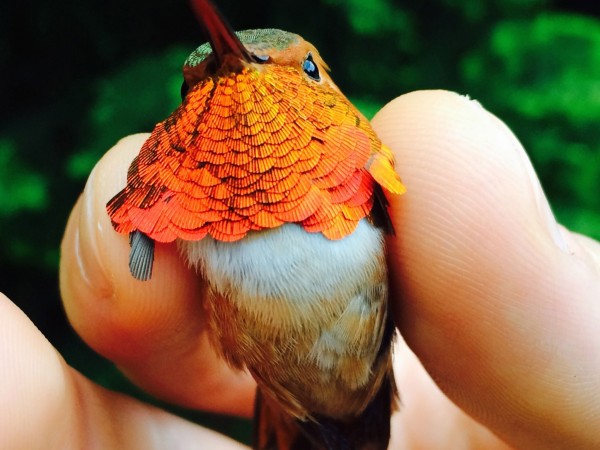鸟类之死无关高温有关降水

图片来源:美国俄勒冈州立大学SARAH FREY
气候变化会导致大量鸟类灭绝,但在一些情况下,气温升高并非鸟类杀手。根据《全球变化生物学》在线发表的一篇研究性文章,降雨量的减少反而极有可能造成最重要的影响。
研究者分析了从美国加利福尼亚到加拿大不列颠哥伦比亚省32 年里132 种鸟类的分布情况和物种丰富程度。研究显示,降雨量是预测鸟类数量变化趋势最准确的参考系,研究中高达近60%的鸟类都受到其影响,在最湿润的12 月份其作用最大。这可能是因为冬天的降雪对春夏季具有重要的持续效应,,来自冰雪融化的径流会影响溪流的流量、植物的生长以及昆虫的可获得性。
由于北美西部地区降水量预计会更少,而强度更大,这可能会对那些一贯需要潮湿环境进行繁育的鸟类进一步产生负面影响。棕煌蜂鸟就是对愈加干旱的西北太平洋气候条件适应性尤为脆弱的一种鸟(如图所示),这种鸟正在以每年3%的数量递减。
原文摘要:
Javier Gutiérrez Illán, Chris D. Thomas, Julia A. Jones, Weng-Keen Wong, Susan M. Shirley andMatthew G. Betts
Predicting biodiversity responses to climate change remains a difficult challenge, especially in climatically complex regions where precipitation is a limiting factor. Though statistical climatic envelope models are frequently used to project future scenarios for species distributions under climate change, these models are rarely tested using empirical data. We used long-term data on bird distributions and abundance covering five states in the western US and in the Canadian province of British Columbia to test the capacity of statistical models to predict temporal changes in bird populations over a 32-year period. Using boosted regression trees, we built presence-absence and abundance models that related the presence and abundance of 132 bird species to spatial variation in climatic conditions. Presence/absence models built using 1970–1974 data forecast the distributions of the majority of species in the later time period, 1998–2002 (mean AUC = 0.79 ± 0.01). Hindcast models performed equivalently (mean AUC = 0.82 ± 0.01). Correlations between observed and predicted abundances were also statistically significant for most species (forecast mean Spearman′s ρ = 0.34 ± 0.02, hindcast = 0.39 ± 0.02). The most stringent test is to test predicted changes in geographic patterns through time. Observed changes in abundance patterns were significantly positively correlated with those predicted for 59% of species (mean Spearman′s ρ = 0.28 ± 0.02, across all species). Three precipitation variables (for the wettest month, breeding season, and driest month) and minimum temperature of the coldest month were the most important predictors of bird distributions and abundances in this region, and hence of abundance changes through time. Our results suggest that models describing associations between climatic variables and abundance patterns can predict changes through time for some species, and that changes in precipitation and winter temperature appear to have already driven shifts in the geographic patterns of abundance of bird populations in western North America.
作者:冯丽妃

